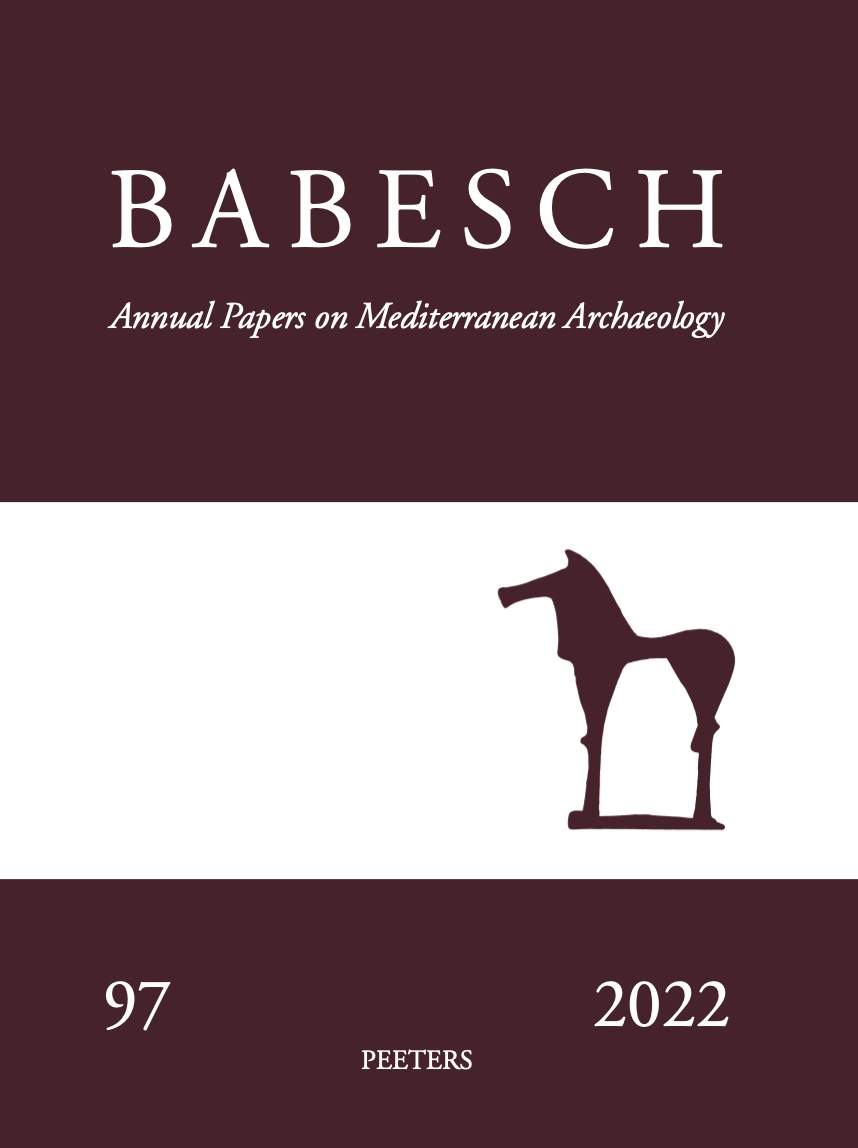 previous article in this issue previous article in this issue | next article in this issue  |

|
Document Details : Title: Terracotta Statues of Olympia Subtitle: A Review Article Author(s): LULOF, Patricia S. Journal: BABESCH Volume: 70 Date: 1995 Pages: 225-232 DOI: 10.2143/BAB.70.0.2002291 Abstract : This article is based on the definitive publication of the terracotta statues found in Olympia (1993). From the end of the seventies onwards, every fragment of the concerning material found during the German excavations in Olympia and kept in the Olympia Museum and its storerooms, has been studied by Aliki Moustaka. One of her main aims was to reconstruct the complete corpusand, in particular, to investigate the connections between the terracotta statues and the numerous roofs found in Olympia. The terracotta material consists of a group of 236 fragments which once belonged to at least 35 multi-figured groups, solitary figures, and animals. Some of them were designed as dedications or votive groups, but most of them must be regarded as fundamental parts of the terracotta roof-systems (central and lateral acroteria) of small treasuries built inside the sanctuary of Olympia under the ‘Kronos hill'. Except for some isolated pieces, the works all date from the Archaic period. The earliest piece was produced at the beginning of the sixth century; the peak of production was around the turn of the sixth and fifth century; and the most recent, the Zeus and Ganymed group, can be dated to the end of the first quarter of the fifth century. They were made of local clay at several workshops, not all in Olympia itself, using a technique that must be regarded as exclusively Greek. In this article, Moustaka's work will be summarized and extensively reviewed. In addition, her conclusions will be briefly discussed against the background of recent debate on the techniques used in terracotta statues in Greece and central Italy. |
|
